Note

- the information symbol illuminates and the message The car key battery is low. See Owner's Manual for replacement. is shown in the driver display
- signal reception repeatedly fails despite the key being within 20 metres (65 feet) of the car.
Note
The battery in the button-less key1 (Key Tag) cannot be replaced - a new key can be ordered from an authorised Volvo workshop.
Important
Opening the key and changing the battery
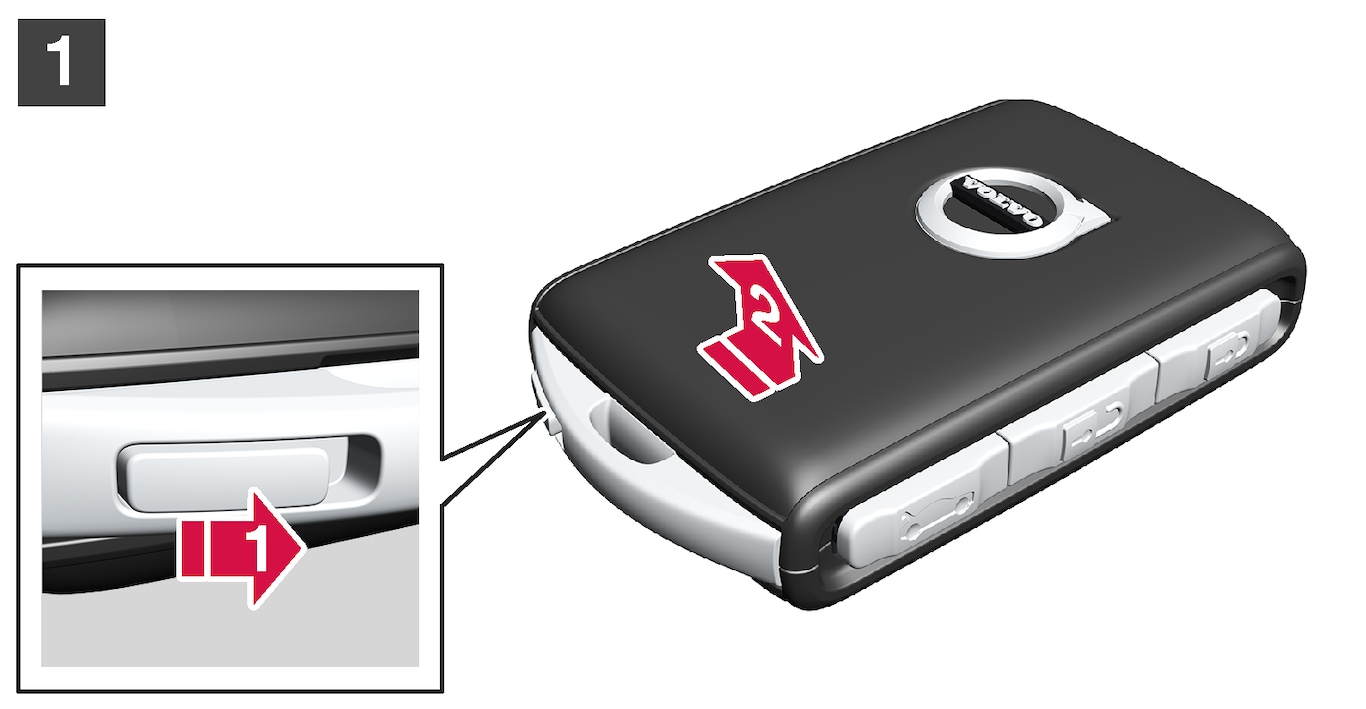

 Hold the key with the front visible and the Volvo logo facing the right way – slide the button by the key ring at the bottom edge to the right. Slide the front side's shell a few millimetres upwards.
Hold the key with the front visible and the Volvo logo facing the right way – slide the button by the key ring at the bottom edge to the right. Slide the front side's shell a few millimetres upwards.
 The shell will then come free and can be lifted off the key.
The shell will then come free and can be lifted off the key.
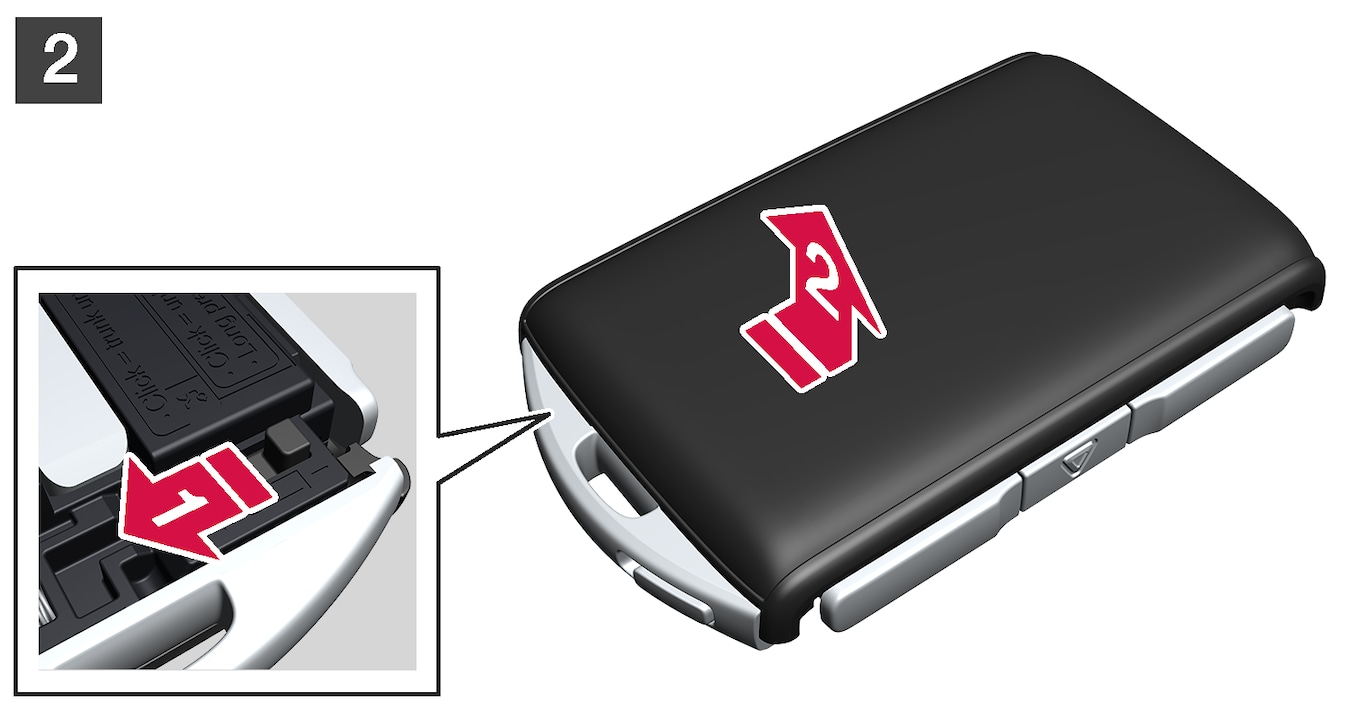

 Turn the key, move the button to the side and slide the back shell a few millimetres upwards.
Turn the key, move the button to the side and slide the back shell a few millimetres upwards.
 The shell will then come free and can be lifted off the key.
The shell will then come free and can be lifted off the key.


Use a screwdriver or similar to turn the battery cover anticlockwise until the markings meet at the OPEN text.
Carefully lift away the battery cover by pressing e.g. a fingernail into the recess.
Then prize the battery cover upwards.


The battery (+) side is facing upwards. Then carefully prize loose the battery as illustrated.
Important
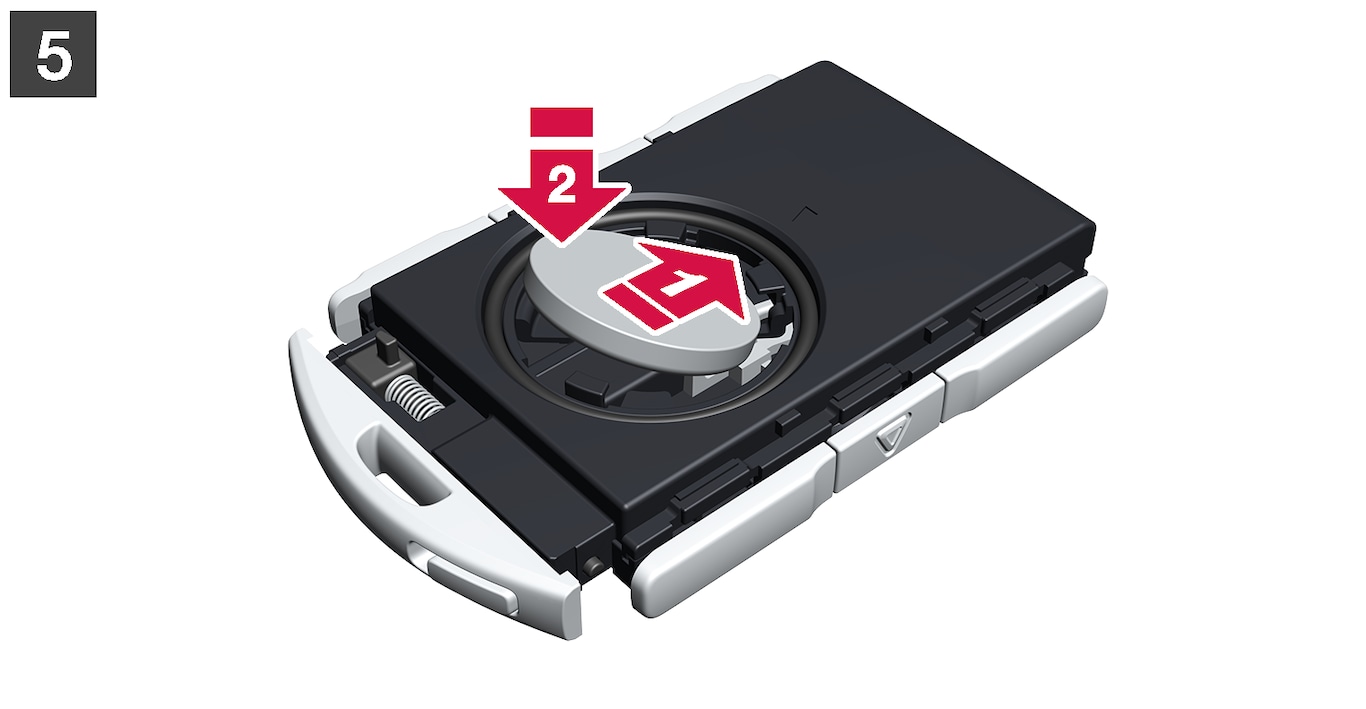

Install a new battery with the (+) side up. Avoid touching the key's battery contacts with your fingers.
 Place the battery in the holder with the edge down. Then slide the battery forwards so that it fastens under the two plastic catches.
Place the battery in the holder with the edge down. Then slide the battery forwards so that it fastens under the two plastic catches.
 Press the battery down so that it fastens under the upper black plastic catch.
Press the battery down so that it fastens under the upper black plastic catch.
Note
Note
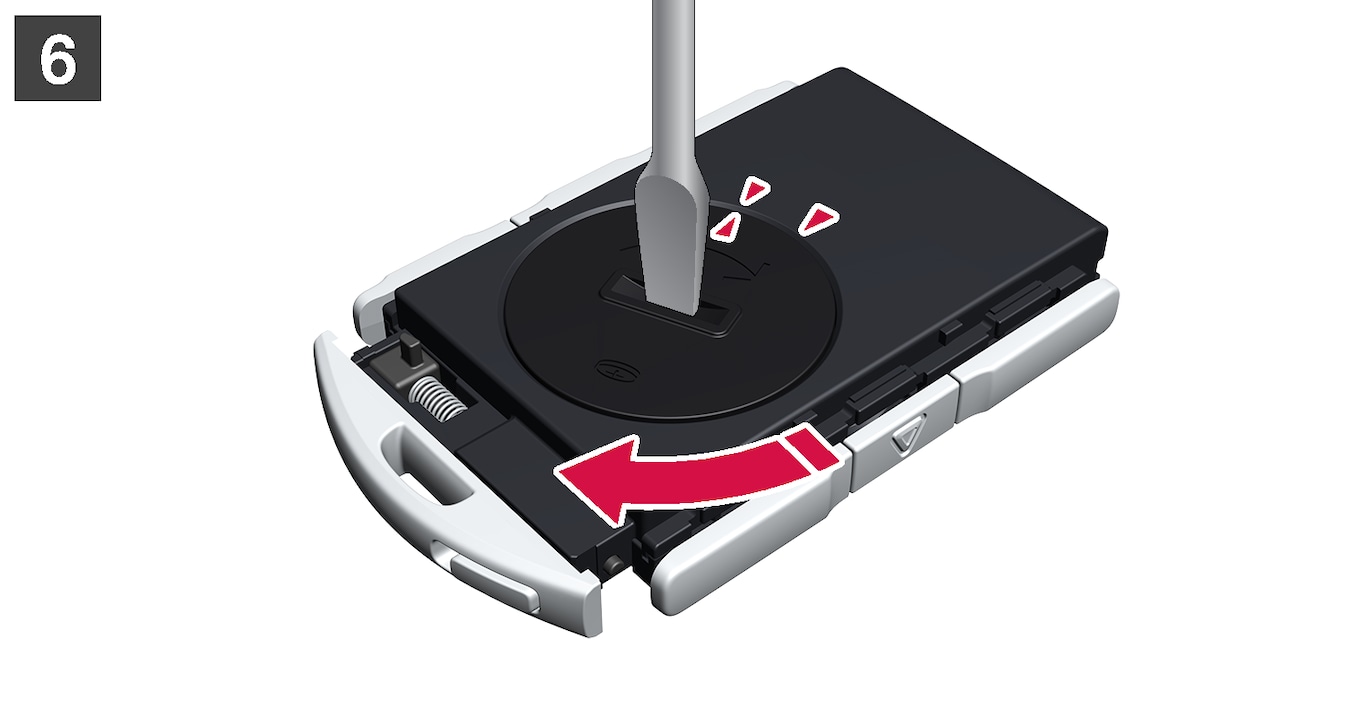

Refit the battery cover and turn it clockwise until the marking aligns with the CLOSE text.


 Reposition the rear side's shell and press it down until a clicking sound can be heard.
Reposition the rear side's shell and press it down until a clicking sound can be heard.
 Then slide the shell back.
Then slide the shell back.
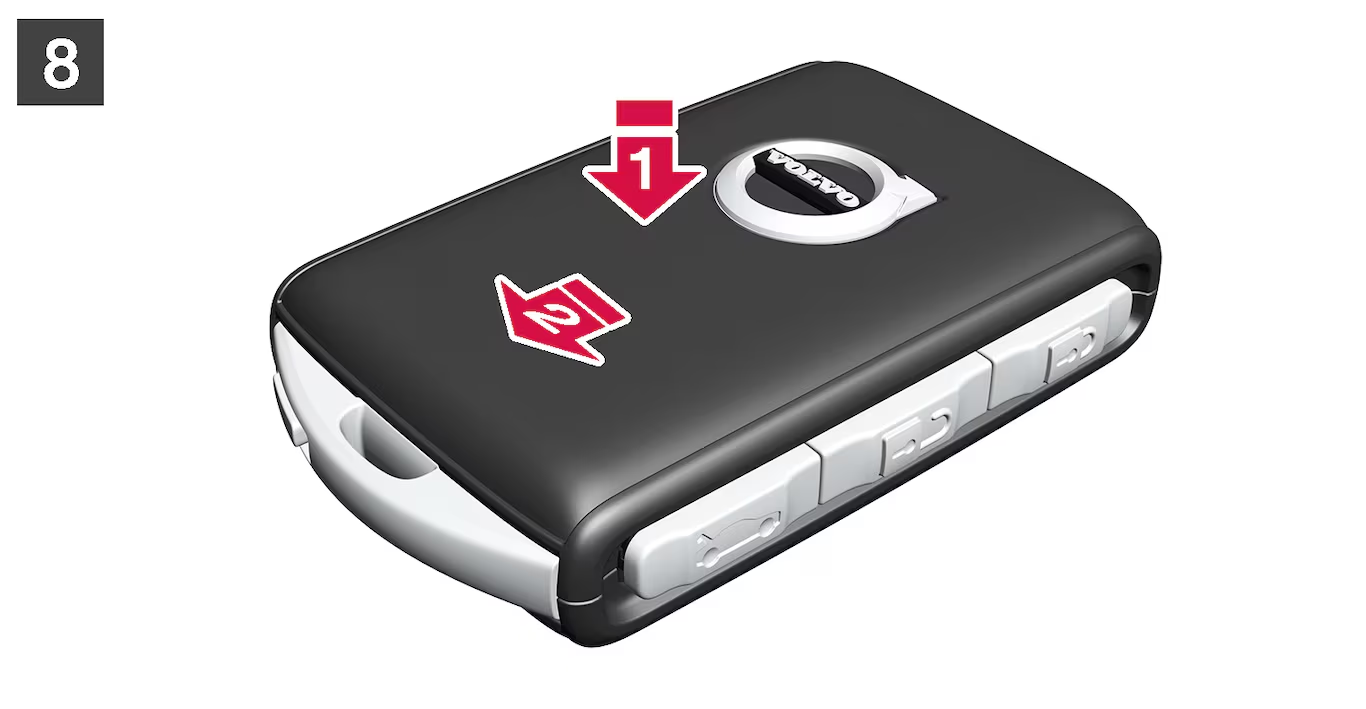

 Turn the key over and refit the front side's shell by pressing it down until a clicking sound can be heard.
Turn the key over and refit the front side's shell by pressing it down until a clicking sound can be heard.
 Then slide the shell back.
Then slide the shell back.
Warning
Check that the battery is fitted correctly with the correct polarity. If the key shall not been used for a long time, remove the battery to avoid battery leakage and damage. Batteries with damage or leaks may cause corrosive injury on contact with the skin. Therefore, use protective gloves when handling damaged batteries.
- Keep batteries out of the reach of children.
- Do not leave batteries lying around since they can be swallowed by children or pets.
- Batteries must not: be dismantled, short-circuited or thrown into open flames.
- Do not try to charge non-rechargeable batteries. They may explode.
- Check battery operated products for signs of damage on a regular basis.
The key should not be used if anything indicates that the key or its battery has been damaged or has started to leak. Keep defective products out of the reach of children.